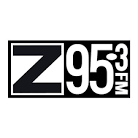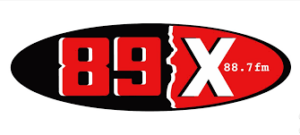
About Canadian Content and radio, on the fiftieth anniversary of its mandate and next year’s fiftieth birthday of its implementation: as broadcasters and regulators alike consider a pending review of the rules governing radio, likely to take place this fall, some thoughts, offered as a fan.
Canadian music and radio have been an influence on me at every stage of my nearly 40 years in the business. Searching out that music has taken different forms over the years.
In the early ‘70s, it was hearing CKLW at night in Central New Jersey, then seeking out CHUM, CKOC, and whoever else I could hear in the Northeast.
In the early ‘80s, when I was in college in Michigan, it was badgering the PD of CJOM Windsor for access to his discard singles.
In the mid-‘80s, when I was working for Radio & Records in Los Angeles, and no longer in earshot of Canadian radio, it was asking the trade publication’s Canadian reporters to send me care packages of the songs I otherwise knew only as titles on a playlist.
In the late ‘80s, when I was back in the Northeast, I made a driving trip over a holiday weekend. I spent 40 minutes at the Fort Erie border crossing trying to explain to customs why I was driving to Hamilton to buy records. It was because I’d have more time in the stores before they closed than going to Toronto.
 In the late ‘90s, streaming made it possible for me to keep up with Canadian radio and music all the time. CKZZ (Z95.3) Vancouver, B.C., was one of the first available CHRs, and in 1997-98, I spent as much time with them as I did with WHTZ (Z100) New York or my local stations.
In the late ‘90s, streaming made it possible for me to keep up with Canadian radio and music all the time. CKZZ (Z95.3) Vancouver, B.C., was one of the first available CHRs, and in 1997-98, I spent as much time with them as I did with WHTZ (Z100) New York or my local stations.
Within a few years, any Canadian song was a click away. These days, I can buy most of them on iTunes as well, regardless of what the U.S. label is doing, or whether there’s a U.S. label. When I discovered the surprisingly prescient “Things Gotta Change” by Cruiser on a 1981 CKOC playlist recently, I had an easier time buying it than I probably would have had on a record buying trip to Hamilton at the time.
I’ve been fortunate to work with a number of Canadian broadcasters in recent years. Part of what I’ve had to offer is fresh ears on the songs that I knew because of fandom, not a fiat. I hope these comments are understood in that spirit. I was scheduled to moderate a panel at this year’s Canadian Music Week about the radio/music industry relationship, which would have included some of the dialogue on supporting Canadian artists internationally that I’m hoping to foster here.
CMW was also set to include a panel on “The Broadcast Regulatory Environment For 2020” that would have discussed the pending CRTC review of radio regulations, particularly in an environment where “new digital media undertakings are operating in Canada without the tax and regulatory responsibilities that Canadian licensed broadcasters must abide by” when it comes to Cancon rules, as well as Francophone Canada’s hit-to-non-hit ratios, and Category 3 commitments.
In the ‘70s and early ‘80s, CKLW and the CRTC had a famously adversarial relationship, centered around its effective functioning as a Detroit (and Cleveland, and Fort Wayne, Ind.) radio station. By the ‘90s, there was the acknowledgement that CJOM, now CIMX (89X), needed special dispensation to compete effectively even in Windsor, and allowed it to play 20% Cancon, which it does to this day.
When I discovered CKLW in late ‘73/early ’74, the appeal was the entire mix—particularly the R&B records that hadn’t crossed over yet, even in the Northeast. But there were four Canadian records I particularly remember, not including “The Americans (A Canadian’s Opinion),” the spoken-word hit that became briefly phenomenal in both countries, and gives this article its title:
- Terry Jacks, “Seasons In The Sun”—the most iconic record of ‘70s hits, a showcase for Canada’s strength in the soft pop of the era;
- Bachman-Turner Overdrive, “Let It Ride”—classic rock that I heard months before my friends and a song that has only recently become a little lost to time, behind other songs in the BTO canon;
- Bill Amesbury, “Virginia (Touch Me Like You Do”—the artist is now Roberta Amesbury. It became a midchart hit in America, but CKLW was where I heard it on the radio. The sorta naughty lyric made it cool to an 11-year-old and a great pop nugget to this day.
- Lois Fletcher, “I Am What I Am”—covering international hits so that they could qualify as Cancon was a common Canadian music tactic at the moment. It’s exactly the sort of record that programmers thought of as fodder. It was never cool. It still makes me smile now.
Canadian broadcasters have always said that the right amount of Cancon—the amount the audience wants—would be about 15-20%. In the mid-‘10s, Rogers began targeting Kingston with a Watertown, N.Y., Top 40 station and, on its own volition, played about 15% Cancon, including some titles that were not American hits. (It’s currently playing the 35% that a Canadian licensed station would.)
It’s true that when I scan through my phone, the amount of Canadian music is indeed about 20%. But it’s not the 20% that stations would have likely played on their own volition with no content rules. It’s all four of the songs that I liked on CKLW in spring ’74—hits and nuggets both. The most recent additions are Tenille Townes’ “Come As You Are,” now a consistent Country hitmaker, but also the indie-label pop of A Is For Arrows’ “Talking In My Sleep.” Because there is more than 20% Cancon on radio, I discover the 20% I like.
Records spread internationally in all kinds of ways these days. Powfu’s “Coffee For Your Head” is clearly this generation’s “Seasons In The Sun.” It broke through streaming, then came back to Canadian radio after an American story existed. JP Saxe’s “If The World Was Ending” began in Canada and made its American inroads through SiriusXM’s Hot AC and CHR channels. But the border-market effect endures, too. The Arkells’ “Years In The Making” is getting airplay on WEDG (The Edge) Buffalo, N.Y., now.
Individual radio stations don’t show the amount of enterprise on new music that they were known for in years past. National and international platforms have a far easier time putting a song on the agenda. But I was still excited to find the W3apons’ “She Was The One” through its airplay on CJDJ (Rock 102) Saskatoon. Listening to that station to hear “She Was The One” led me to Seven Strait’s cover of “Folsom Prison Blues.” That’s already more local enterprise than almost any American station. If those songs fall anywhere in the area between 15% and 35%, I still want to know about them.
 The right compromise between 15% and the current 35-40% is probably 25% or even the original 30% of the 1971 mandate. A reduction acknowledges that every Canadian radio station is now 89X, competing in a “border market.” But it still encourages music enterprise, which I’d hate to see radio anywhere lose.
The right compromise between 15% and the current 35-40% is probably 25% or even the original 30% of the 1971 mandate. A reduction acknowledges that every Canadian radio station is now 89X, competing in a “border market.” But it still encourages music enterprise, which I’d hate to see radio anywhere lose.
Part of Canadian radio’s value to Canadian music and artists is its ability to be a worldwide showcase. If every station is in a border market, every station now has the opportunity to be a border blaster—an 89X or CIDR (The River). At this moment, many Canadian station streams are geoblocked to the U.S. Beyond the CRTC’s on-air content regs, Canadian radio and music would benefit from any regulatory initiative that addresses royalty issues and makes international streaming more tenable. There is no reason that Canada’s world-class Alternative music and radio (as just one example) should not have the same worldwide mystique as Australia’s Triple-J.
Canada’s major group broadcasters have separate label initiatives that support Canadian acts. My experience in America is that songs that begin with the patronage of one major broadcaster sometimes become siloed. With Canada’s broadcasters now huddling on their thoughts for the radio review, perhaps there is some sort of back-to-the-future value in reviving the Maple Leaf System of musical networking among broadcasters that preceded Cancon—not as a replacement, but an augmentation. The Radioplayer mantra of “compete on content, cooperate on technology” should perhaps extend to “cooperate on Cancon,” particularly now that radio is hardly the only gatekeeper.
A few other thoughts starters on the regs. Category 3’s specialty genres might benefit far more from well-programmed, full-time stations in Radioplayer than from their current off-hours exposure on a handful of FM licenses. And whatever decision the CRTC might make about the remaining Hit/Non-Hit rules in Francophone markets, nearly 20 years of working with audience research shows me that the audience’s dividing line between a hit, and a song they may not even know, whether old or new, is somewhere around a peak of No. 15 on the charts, not No. 40.
Cancon has been responsible for a lot of my love affair with Canadian music and radio. But beyond the regulations, part of what has made Canadian CHR great over the years is that it kept its eye on the world, not just the U.S. Playing the British new wave that American radio relegated to college stations in 1980-81 was part of what kept CHUM and CKOC more vital than their U.S. counterparts in those years. In recent years, there has been less distinction in the international titles played in the two countries, particularly in CHR and Hot AC. I hope those differences will continue as well.
My fondness for Canadian music and radio is also because of the people of those industries (and their willingness to entertain my outsider’s input). And because of their ongoing commitment to personality and community service, as those things become more of a struggle for broadcasters worldwide. Doing those things that keep Canadian radio competitive allow those commitments to continue.
Sean Ross is author of the Ross On Radio newsletter. He can be reached at rossonradio@comcast.net. Sign-up for his free newsletter on radio and music trends and history here. tinyurl.com/mhcnx4u




